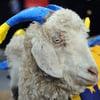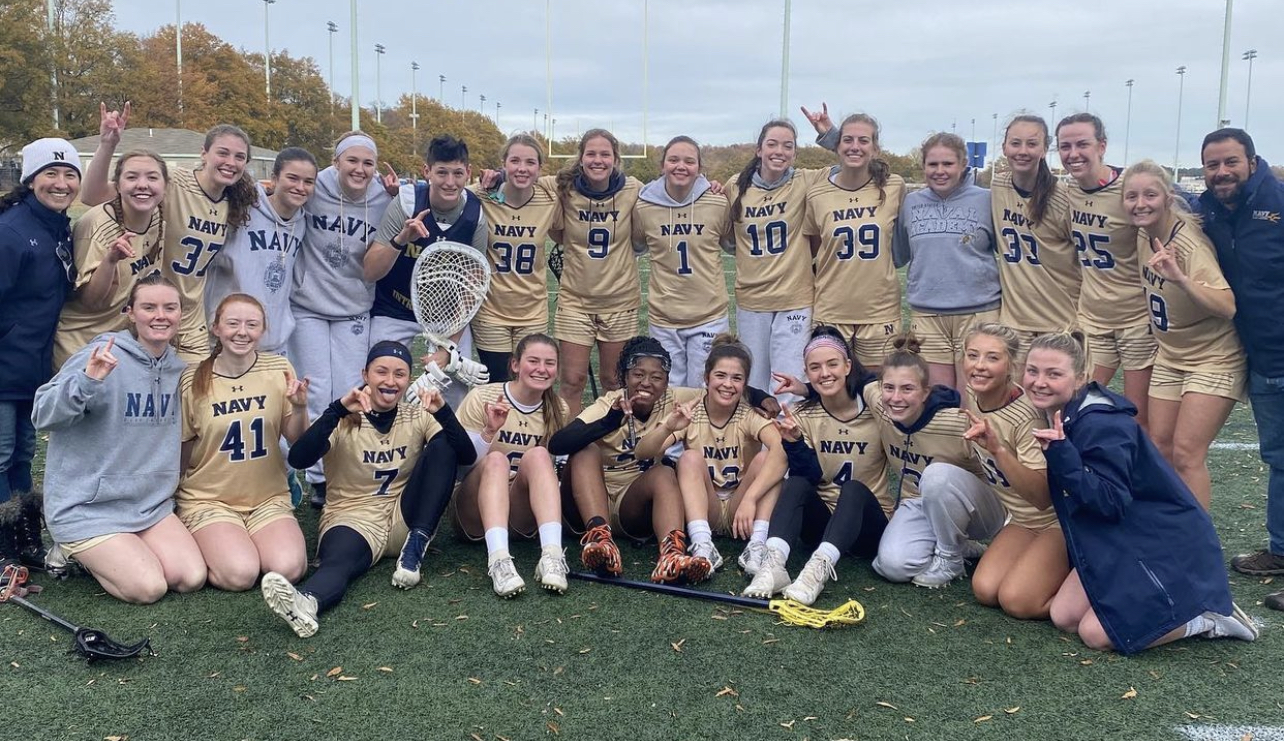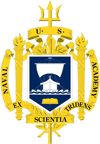The Naval Academy is proud to have graduated a number of women and men that later traveled into space. One of the most well-known Naval Academy graduates is Alan Bartlett (B.) Shepard Jr., the first American astronaut to do so. While his flight was 23 days after the Russian cosmonaut, Yuri Gagarin’s flight, it was remarkable since Shepard was able to pilot his rocket, whereas Gagarin was just a passenger on his voyage—and while the Russian launch was shrouded in secrecy, Shepard’s flight, successful splashdown and retrieval by helicopter and aircraft carrier were watched live by millions around the world and gleefully celebrated with parades and accolades across the U.S.
The Beginning of an Adventure
Shepard was born in East Derry, New Hampshire, on November 18, 1923 to Lt. Colonel Alan B. Shepard (USA, Ret.) and Renza (Emerson) Shepard. He graduated from the Pinkerton Academy in Derry, New Hampshire in 1940 and then spent one year at Admiral Farragut Academy in Toms River, New Jersey. From there, Shepard was admitted to the Naval Academy. He graduated on June 7, 1944, and was commissioned as an ensign, immediately deploying to the destroyer Cogswell in the Pacific for the last year of World War II. When he returned, Shepard married Louise Brewer, a woman he met while studying at the Naval Academy. They later had two girls and helped to raise a niece.
Shepard craved adventure and proved an ambitious student, even after his deployment. He went on to train at Corpus Christi Naval Air Station, Texas, and Pensacola Naval Air Station, Florida. Shepard received his naval aviator wings in March 1947, but he was so excited to fly that he earned his pilot’s license from a civilian flying school prior to this. After he became a Navy pilot, Shepard was assigned to Fighter Squadron 42 at Norfolk, Virginia, and Jacksonville, Florida, and he served several tours aboard aircraft carriers in the Mediterranean.
Fearless and Flying High
Shepard was never afraid to take risks. In 1951, after attending the U.S. Navy Test Pilot School at Patuxent River, Maryland, he became a test pilot, performing risky high altitude tests to obtain data on light at different altitudes and on a variety of air masses over the American Continent. He played a role in experiments for the development of the Navy's inflight refueling system, carrier suitability trials of the F2H3 Banshee and trials of the first angled carrier deck. He was also a project test pilot on the F5D Skylancer and spent his last five months there as an instructor in the test pilot school. He never stopped learning. After completing his second tour at Patuxent, Shepard went to Naval War College at Newport, Rhode Island, and was subsequently assigned to the staff of the Commander-in-Chief, Atlantic Fleet, as an aircraft readiness officer.
Looking Higher
Yet Shepard had even greater dreams. After his successful stint as a test pilot, he turned his sights on the newly formed National Aeronautics and Space Administration (NASA), and worked to become one of the seven astronauts selected for the U.S. Mercury Program. This group underwent incredibly rigorous physical and scientific training to prepare them for every conceivable situation in space. In the end, astronaut Alan Shepard was selected for the first mission.
He made history on May 5, 1961 at 9:34am EST, when he successfully completed a 15-minute, 28 second suborbital flight that traveled to an altitude of 116 miles. His vessel reached a velocity of 5,134 miles per hour and pulled a maximum of 11G's in the Freedom 7 spacecraft, which he had named himself. When Shepard was recovered from the Atlantic Ocean, the engineers examining the capsule determined that it could be reused. The doctors who examined Shepherd determined that he was in excellent shape, both physically and psychologically, and "...could be used again too."
A Mission to the Moon
Shepard would get that opportunity when NASA picked him as command pilot for Gemini 3, the first manned Gemini mission. Unfortunately, he fell ill in 1964 and was soon diagnosed with the ear affliction Ménière disease; this causes too much fluid in the inner ear, and leads to nausea, dizziness and other symptoms that precluded him from piloting a flight.
Fortunately, Shepard was able to remedy this condition on May 7, 1969 with a surgical procedure, and was selected for the next scheduled flight. After this flight was scrapped by NASA, he became the commander of the crew of the Apollo 14 flight with Edgar D. Mitchell, Lunar Module Pilot (LMP) and Stuart A. Roosa, Command Module Pilot (CMP) from January 31 - February 9, 1971. When Shepard and the team landed on the moon, he said, “Al is on the surface, and it's been a long way, but we're here." He gamely used a modified six-iron to hit two golf balls across the lunar Fra Mauro highlands; one landed in a crater, the other, he said, went for “miles and miles and miles.” The team performed the longest list of experiments at the time, proved they could cover a lot of ground on foot and brought back nearly 95 pounds of lunar rock samples. Live tv cameras captured it all.
In June 1971 Shepard returned to his role as Chief of the Astronaut Office and was promptly appointed by President Nixon as a delegate to the 26th United Nations General Assembly. He was promoted to Rear Admiral on December 1, 1971, and then retired from the Navy and resigned from NASA on July 31, 1974; he went on to work with the Marathon Construction Company of Houston and the Winward Distributing Company. Later, he started his own company called Seven Fourteen Enterprises, honoring his Freedom 7 and Apollo 14 missions.
Awards and Accolades
Among Shepard’s numerous accolades are the prestigious congressional Medal of Honor (Space), two NASA Distinguished Service Medals, the NASA Exceptional Service Medal, the Navy Astronaut Wings, the Navy Distinguished Service Medal and the Navy Distinguished Flying Cross. He also received the Langley Medal (highest award of the Smithsonian Institution), the Lambert Trophy, the Kinchloe Trophy, the Cabot Award, the Collier Trophy, the City of New York Gold Medal (1971) and the achievement Award for 1971. Shepard earned an Honorary Master of Arts degree from Dartmouth College in 1962, an Honorary Doctorate of Science from Miami University (Oxford, Ohio) in 1971, and an Honorary Doctorate of Humanities from Franklin Pierce College in 1972. He also co-authored Moon Shot: The Inside Story of America’s Race to the Moon (1994) with Mercury astronaut Deke Slayton.
Shepard continued to give back to the community after his retirement. In 1984 he co-founded the Mercury Seven Foundation (now called the Astronaut Scholarship Foundation) to provide scholarships to college students for science and engineering students in college, and served as president and chairman for two years from 1995-1997.
Shepard passed away at the age of 74 on July 21, 1998 in Monterey, California, after a long illness. His contributions to America's success in the “Space Race” are etched in history books and the minds of Americans across generations. As a war veteran, test pilot and space explorer, Shepard showed incredible bravery in the face of incredible danger. He will forever be remembered and celebrated for taking Americans to new frontiers—and new heights.
We are grateful for his service and the service of all of our esteemed alumni. Come visit the Naval Academy and learn about the lives of Shepard and so many brave women and men who protect our country and advance it in new ways every day. And remember, when you shop at Navyonline, you’re supporting the midshipmen of past, present and future!




